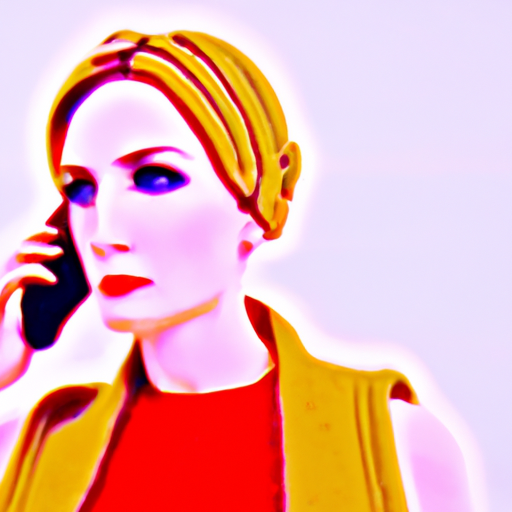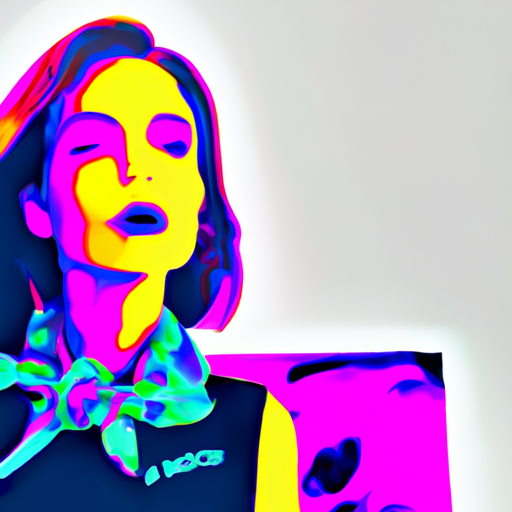
-
Table of Contents
Exploring Virtual Fashion Illustration and Try-On

Virtual fashion illustration and try-on have revolutionized the fashion industry, providing new opportunities for designers, retailers, and consumers alike. With advancements in technology, virtual fashion has become more accessible and realistic, allowing designers to create digital garments and consumers to virtually try on clothes before making a purchase. In this article, we will delve into the world of virtual fashion illustration and try-on, exploring its benefits, challenges, and future potential.
The Rise of Virtual Fashion Illustration
Virtual fashion illustration involves the creation of digital garments using computer software. It allows designers to visualize their ideas and concepts without the need for physical prototypes. This not only saves time and resources but also opens up new possibilities for creativity and experimentation.
One of the key advantages of virtual fashion illustration is the ability to easily make changes and iterations. Designers can quickly modify colors, patterns, and shapes, allowing for a more efficient design process. This flexibility also enables designers to cater to individual preferences and create personalized garments.
Furthermore, virtual fashion illustration has a positive environmental impact. By reducing the need for physical samples and prototypes, it minimizes waste and carbon emissions associated with traditional fashion production. This aligns with the growing demand for sustainable and eco-friendly practices in the industry.
The Benefits of Virtual Try-On
Virtual try-on takes virtual fashion a step further by allowing consumers to virtually try on clothes before making a purchase. This technology utilizes augmented reality (AR) or virtual reality (VR) to create a realistic and immersive experience.
One of the main advantages of virtual try-on is the convenience it offers to consumers. Instead of visiting physical stores and spending time trying on multiple outfits, they can simply use their smartphones or other devices to virtually try on clothes from the comfort of their homes. This saves time and provides a more personalized shopping experience.
Virtual try-on also helps address the issue of sizing and fit. Many consumers struggle with finding the right size when shopping online, leading to high return rates. With virtual try-on, users can see how a garment fits on their own body, reducing the likelihood of purchasing ill-fitting clothes. This not only improves customer satisfaction but also reduces the environmental impact of returns.
Moreover, virtual try-on has the potential to enhance inclusivity in the fashion industry. By allowing users to see how clothes look on different body types, skin tones, and genders, it promotes diversity and representation. This can help break down traditional beauty standards and create a more inclusive and accepting fashion landscape.
Challenges and Limitations
While virtual fashion illustration and try-on offer numerous benefits, there are also challenges and limitations that need to be addressed.
One of the main challenges is the accuracy of virtual representations. Despite advancements in technology, virtual garments may not always look exactly the same as their physical counterparts. Colors, textures, and draping can be difficult to replicate accurately, leading to discrepancies between the virtual and real-world appearance of clothes. This can affect the decision-making process of consumers who rely heavily on visual cues when shopping.
Another challenge is the integration of virtual fashion into existing retail systems. Retailers need to invest in the necessary infrastructure and software to support virtual try-on, which can be costly and time-consuming. Additionally, there may be resistance from traditional retailers who are hesitant to adopt new technologies and change their established processes.
Furthermore, virtual try-on may not fully capture the tactile experience of trying on clothes. The feel of the fabric, the weight of the garment, and other sensory aspects cannot be replicated through virtual means. This can be a drawback for consumers who value the physical experience of shopping.
The Future of Virtual Fashion
Despite the challenges, the future of virtual fashion illustration and try-on looks promising. As technology continues to advance, we can expect more realistic and accurate virtual representations of garments. This will further bridge the gap between the virtual and physical worlds, making virtual try-on an even more reliable tool for consumers.
Additionally, the integration of artificial intelligence (AI) and machine learning can enhance the virtual fashion experience. AI algorithms can analyze user data and preferences to provide personalized recommendations and styling suggestions. This can help consumers discover new styles and make more informed purchasing decisions.
Moreover, virtual fashion has the potential to revolutionize the way clothes are produced and consumed. With the rise of digital fashion marketplaces, consumers can purchase virtual garments that can be worn in virtual environments or shared on social media platforms. This opens up new revenue streams for designers and reduces the need for physical production, contributing to a more sustainable fashion industry.
Conclusion
Virtual fashion illustration and try-on have transformed the fashion industry, offering new possibilities for designers and consumers. The benefits of virtual fashion, such as increased creativity, convenience, and sustainability, are undeniable. However, challenges related to accuracy, integration, and the tactile experience need to be addressed.
Looking ahead, the future of virtual fashion is promising. Advancements in technology, coupled with the integration of AI and machine learning, will further enhance the virtual fashion experience. As virtual fashion becomes more realistic and accessible, it has the potential to reshape the way we design, produce, and consume clothes.
Ultimately, virtual fashion illustration and try-on are not just trends but transformative tools that have the power to shape the future of the fashion industry.
